

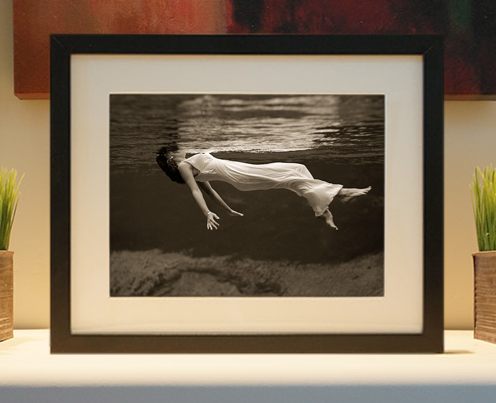
Framed or unframed, desk size to sofa size, printed by us in Arizona and Alabama since 2007. Explore now.
Shorpy is funded by you. Patreon contributors get an ad-free experience.
Learn more.

- Roll your own
- Rugged and real!
- A Charles Purcell - Mama Cass Connection
- Uncle SAAM
- Obfuscation
- One Chocolate Soldier rode away
- Victor Marquis de la Roche
- The Little House Across Way ...
- Vanderbilt Gates
- Vanderbilt Mansion
- You can still see that gate
- Withering heights for me
- So Jim,
- Top Heavy
- Re: Can't Place It.
- Bus ID
- Since you mention it
- The White Pages ?
- Moonlight Tower
- 1907?
- Fire(men) and Water
- Can't Place It
- Can anyone
- Wings
- Where's Claudette and Clark?
- Overbuilt Rolodex
- One song
- Give Me Wings Please!
- PRR
- Pinball Wizards
Printporium
Mullett's Monstrosity: 1905
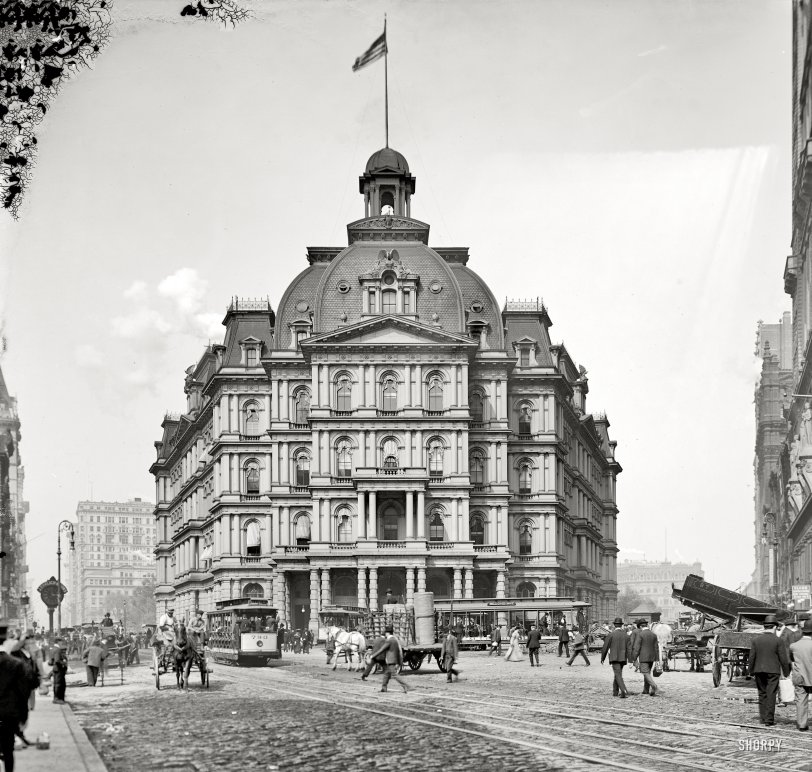
New York circa 1905. "City Hall Post Office." Designed by Alfred Mullett, completed in 1880 and demolished in 1939, the building was derided as "Mullett's Monstrosity" by its numerous critics. Detroit Publishing Co. View full size.
Frank Furness
Hey, I love his buildings! Alright, maybe they're best in moderation, but don't tell me the world would be better off with fewer of his buildings.
Furness!
CGW, you know you DIDN'T say that about Frank Furness! A wonderful architect. And Mullett's rep has waxed and waned over the years, but to me, his buildings (yup, even the gigantic State, War and Navy) enrich a cityscape. The level of detail and articulation he used has been lost since the modernists. Tho I admit that "delicately and subtly proportioned" does not apply to Mullett's work.
Give my regards
to Shorpy, remember me to Stanton_Square.
Go ahead, HVAC it
It's got awnings, so I'm OK with it.
It beats the Jimi Hendrix museum
When I look at places like this I wonder what the top floor rooms were like and what views they had. When I look at a modern building that appears to be wadded-up aluminum foil, I ask myself, what went wrong here?
Ugly Success
Hate it if you want, but how many people successfully created and sold over 40 building designs? Evidently, someone liked it.
Architectural Agglomeration
I think it's kind of wonderful. The effect is fascinating.
Imho
I've seen many pictures of this building and always thought it was stunning. It's like wedding cake of iron and stone.
Second Empire for the Empire State
I could have been worse: they could have hired Frank Furness.
The structure has a Cardassian forehead.
If one were to eliminate all the gray from this photo, and just turn it into black and white lines and spaces, it would probably resemble one of M.C. Escher's woodcuts.
Pure D Awful
I usually like gothic "monstrosities" but this is beyond the pale! Looking at it is like wearing heavy, itchy wool on a hot summer day.
No Horse Pile
This building is the definition of the word "pile," but, you know what, I kind of like it. At least it has symmetry. I think it's better (and at least less massive) than his similar buildings still extant in Washington and St. Louis, and much better than his boring post offices, customs houses, and courthouses around the country. I wish it still existed.
Somehow this solid block of building had a floor collapse that killed three people. Mullett himself seems like he was a real explosive, interesting character too.
I'm really liking that jeweler's clock and the streetlamps (particularly the luminaires; are those incandescents? arcs?).
Lego Land!
I don't know that I would call it a monstrosity. It is pretty busy, though, and those lower columns really ARE eyesores. I keep thinking Legos were involved in the construction.
Why?
Put a gigantic pipe organ inside, fire up some pizzas and it could have become world famous!
UNFAIR!
If Alfred B. Mullett's New York Post Office had survived another 30 years or so, we wouldn't be calling it a monstrosity. Look at how critical opinion has turned around 180 degrees on the topic of his best known surviving work - the former State, War, and Navy Building (now the Eisenhower Executive Office Building) in Washington (shown a few years ago on Shorpy). Sometimes it seems that the Second Empire Style just can't get an even break!
The Monster
I think they were right back then. It looks like it's moving toward me, like the "blob". Maybe it is violating "design dimensions" that we used to, like too heavy on top for its height.
Count the architectural styles
Geesh. I think I'm up to about 12 here. Did this guy pull out every architectural history book on his shelf and plop elements onto this facade or what?
A talented draftsman, not an architect
Over his career Mullett produced some 40 government buildings, and two of his six huge Second Empire piles remain standing in St. Louis and Washington. During the Modernist period, critics accused him of using overblown ornament to hide weak form.
Where was this?
I work in downtown NYC. Since this was called City Hall Post Office, I assume it was in this area. The wedge shape of the building makes me think it was probably located where City Hall Park is now.
[It across the park from City Hall. When the building was demolished, the land was used to enlarge the park. - Dave]
Look at all that horse effluvia
I'm pretty sure that puddle to the right is not rainwater. These streets must have stunk in warm weather.
State, War and Navy
The State, War and Navy Building next door to the White House (now the Eisenhower Executive Office Building) was also designed by the flamboyant Mr. Mullett.
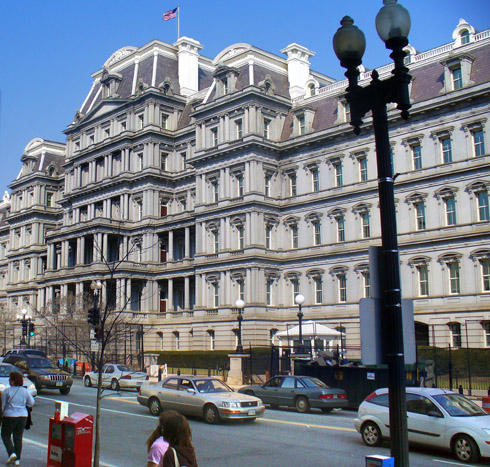
Early coal truck
I remember something similar from the 50's though it was from a truck which pulled up outside, extended a metal chute in through a basement window, the bed tilted up and the coal slid downstairs near the furnace.
Hm.
I wonder what kind of haircut Mullet had?
Coal dumper
My favorite part of this picture is the coal wagon. Does anybody know how it worked?
I guess I understand why
There's certainly a lot going on--or, to be more precise, there's a lot of repetition of just a handful of architectural elements. Still, it's nicer to my curmudgeonly eyes to anything Frank Gehry every wadded up.







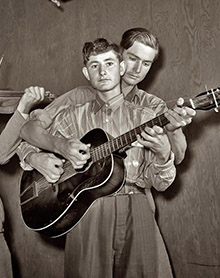
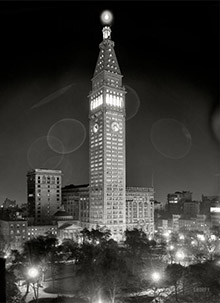
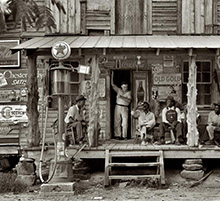
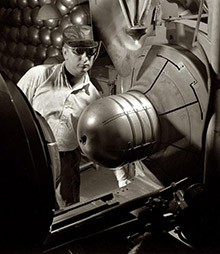
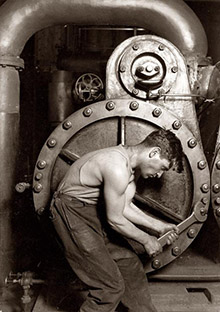

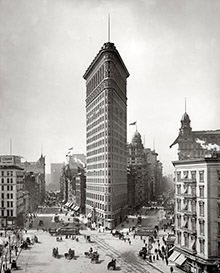
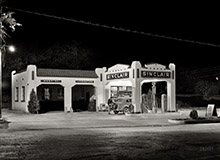
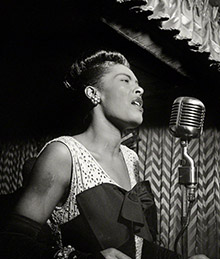
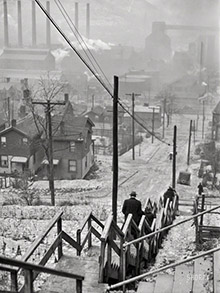
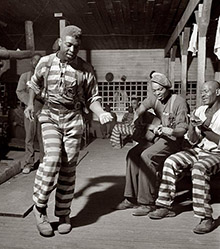

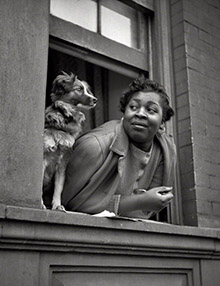
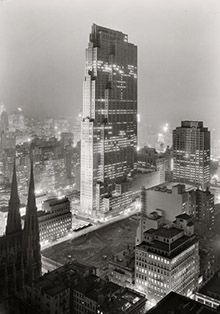

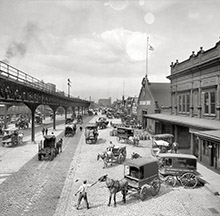

On Shorpy:
Today’s Top 5